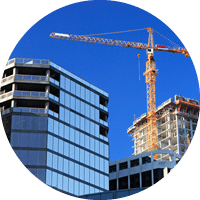
By Buckley Brinkman
It’s been a frenetic two weeks for me. How about you?
All of us started by making sure our loved ones and those close to us were safe and as healthy as was possible. My journey continues by helping the state find personal protective equipment (PPE), while staying connected to my peers across the country to discover how we can collectively overcome common obstacles. I’m learning a great deal from engaging around this cataclysm.
Once again, we’re learning the vital role our manufacturing base plays in our resilience and ability to maintain a strong economy in the face of a health emergency. Our current demands put tremendous stress on the system, exposing its strengths and weaknesses. Manufacturers continue to answer the challenge and we’re seeing what they can – and can’t – do. They can ramp up available capacity and make simple pivots to make new products. They can’t quickly reconfigure supply chains starting or replace capabilities residing in China or other Asian countries. The current cataclysm shows how our pursuit of a few pennies of savings has put our medical security in the hands of other countries.
My PPE search drives that home every day. The state’s initial response was driven by procurement specialists who did a terrific job “liberating” inventories from warehouses and maximizing the output of the available producers. They quickly reached the limits of their capabilities to increase available supplies. Many of these supply chains start in Asia, putting us in line behind these countries as they constrain product flow to take care of their own citizens first.
We’ve exhausted and stretched known suppliers as far as possible and are now turning to engage new manufacturers. The first reactions came from manufacturers who could pivot quickly. We saw clothing manufacturers move to masks and gowns, distilleries switch to hand sanitizer, and plastic manufacturers produce face shields. The changes were straight-forward and required a minimal amount of investment.
That was the easy part. The more complicated changes take more time and effort than most people understand. We can’t just flip a switch and have all the production we need – even from an established factory. Pivoting a plant from making one product to another is a multi-layered process that requires understanding demand, adapting to regulatory requirements, building new capabilities, aligning new supply chains, and securing the capital to make the entire pivot possible. This complicated undertaking requires a laser focus, deep expertise, and cooperation from diverse sources. Extended, international supply chains make the entire effort much more difficult.
The U.S. challenge to bring more ventilators to hospitals most visibly illustrates the struggle. Many thought it was “make a deal, flip a switch, and viola” – ventilators for all. General Motors is a terrific company. Their mass and expertise can make anything happen. They took up the challenge, found a partner, and moved to answer the call. Reality set in as their work revealed it would take a billion dollars and 30 days to bring the new operation on-line. An expensive and time-intensive process.
The reality is that a strong manufacturing base is vital for our national health and security. Manufacturing provides the ability to react to crises as well as opportunities. A vibrant economy must lead the world in innovation and be able to take care of its own. Strong manufacturing drives both. As we’ve lost manufacturing base, we’ve also lost some of our leadership potential. We see that in the current calamity as well as in our trailing position in the 5G market.
We’re spending trillions to save the economy. Let’s spend it wisely! We must invest it to bring back critical manufacturing capabilities. These are key to our security and well-being. National security depends on more than the military and armaments. We need to develop those other capabilities. Our focus must be on what we need to secure the future and our investments should establish manufacturing beachheads to develop competitive capabilities here.
We can learn from this crisis and build a better future. This requires us to put our partisan positions on hold in order to have the difficult conversations needed to prioritize actions that benefit everyone. Our goal should be to create as widespread success as possible. Neither market forces nor government intervention provide all the answers we need. Instead, the situation calls for strategic investment that aligns with both public goals and private returns.
We see how the cataclysm brings out our better natures as we help our neighbors get through this time. We need to capitalize on this momentum to create a robust future that benefits us all.
Brinkman is the Executive Director/CEO at Wisconsin Center for Manufacturing & Productivity and can be reached on LinkedIn and Twitter.




FOLLOW US